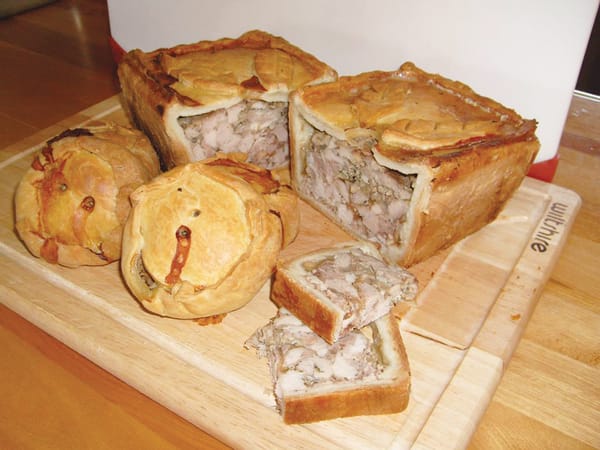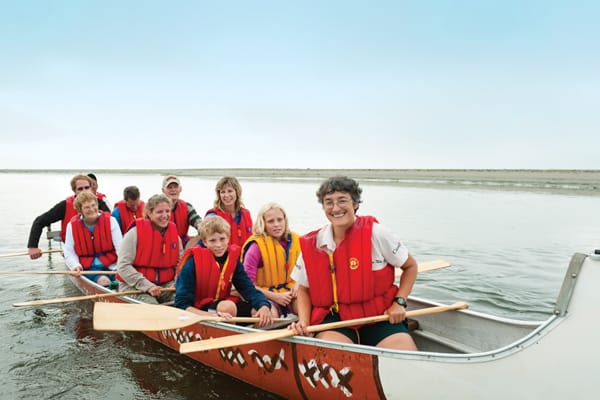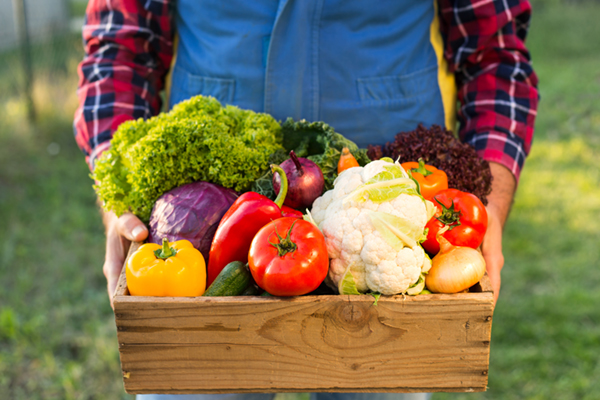Immigrants—some with far-flung origins—are bringing (new) old-world foods to Prince Edward Island
They call it the diamond of Spain,” says Carl Lloyd, referring to the Galicia region in northwest Spain, where he and his wife, Rhonda, lived for four years. “They’ve caught up with the 21st century, but they’ve kept their old-fashioned food ways.”
The Galician methods of preserving meats fascinated the Birmingham, England, native, who went to Spain to renovate houses, but found himself standing outside the meat shops, marvelling at the simplicity of those age-old methods. “They’re curing hams and making chorizos and pepperonis and salamis in their shop-fronts and just hanging them in the window. I basically went in and asked, ‘How do you do that?’”

In May, 2004, Carl and Rhonda came to Canada, in search of a place to conserve rare and heritage breeds of animal stock. En route to Alberta, they decided to tour the Maritimes—and fell in love with PEI. “When we came to PEI, we looked and went, ‘Ahh, perfect,’” says Carl. PEI’s rolling hills and friendly people reminded them of their homeland in the north of England. They bought a farm near Cardigan, where they now raise livestock and operate Lloyd Specialty Meats, which offers old-style preparations of pepperoni, salami, coppa, fuet, air-dried (Parma-style) ham, Serrano ham and a variety of sausages.
The Lloyds are part of a wave of international immigrants settling in PEI. From 2002 to 2010, the number of immigrants from outside the country went from fewer than 100 to more than 2,600. Of course, folks like the Lloyds bring with them many traditional cultures and foods. In some cases, they’re turning those traditional foods into successful businesses. Europeans, in particular, have discovered that there’s a great hunger on the Island for traditional foods, traditional preparation techniques and even the values that go with those techniques. “What I’m trying to do is get people interested in their food again,” says Carl.
Lucy de Jong is another entrepreneur who is bringing continental tastes to PEI. She’s from Halifax, but lived for years in Europe with her Dutch husband, Marc. For Lucy, it’s poffertjes (pronounced poff-er-chuz). “They’re a puffy little pastry that have a creamy smooth, melt-in-your-mouth texture inside,” she says. Prepared on a grill that looks like a giant cast iron egg carton, the piping hot puffs are topped with butter and icing sugar. “What’s not to like?” asks Lucy. “They’re ridiculously delicious.” Customers in Charlottetown have given her little Dutch puffs such rave reviews that she’s opening a shop in Toronto, and she has plans to franchise her business. This summer, fans can visit her mobile kiosk in Charlottetown to get their fix (visit poffertjes.ca to find out where she’ll be).
Like Carl Lloyd, Lucy learned her trade from the European source—in this case, her husband. “We used to make poffertjes at home, as many Dutch families do.” Tasting them inspired Lucy. “Since I first tried them, I’ve wondered why they are not here in Canada.” For 10 years, the idea of introducing poffertjes to North America remained in the back of her mind. Finally, she put her economics degree—with a minor in business—and 15 years’ experience in restaurants to work by test marketing poffertjes at some of the Island’s summer festivals. “People absolutely loved them,” she says.
Carl Lloyd can claim similar authenticity for his meat products. Lloyd refers to the Denominación de Origen designation—a system that regulates food quality and origin in Europe. While his products don’t have this designation, he follows similar standards when he creates his products.
But it’s not just Carl’s final products that attract customers. His farming methods also appeal to contemporary sensibilities with regard to humane and healthy treatment of animals and sustainability. When he and Rhonda moved to PEI, they were looking for a place where they could raise livestock almost entirely outside. “I don’t like confining my animals for any undue period,” says Carl. “All my pigs are out on six acres of land. All my sheep are out. They just get fed grass. All my cows are exactly the same. My chickens have free choice outside. That’s the way of life for me, and it’s a better life for my animals.”
Other Europeans are joining the Lloyds and de Jongs, bringing still more foods with them. Alexandra and Axel Leonhard, for example, moved from Germany to Charlottetown in 2008, with the hope of learning English through a full-immersion experience; they made a little money on the side by selling their homemade German-style breads at the Charlottetown Farmers Market. The couple opened Leonhard’s Café on University Avenue later that year. In 2011, Alexandra returned to Germany, but Axel stayed on to run the café and restaurant—which recently expanded, doubling its capacity, and which offers hardy staples like pork schnitzel, Bauernfrühstück (a Bavarian breakfast omelette of roasted potatoes, bacon and onion) and, for lunch, the Strammer Max: Black Forest ham on slices of German bread, with eggs sunny side up. “It’s been working really great since we’ve doubled the size here; we really needed the extra capacity,” says Axel.
“I think people are much more open to trying new things and being adventurous in their eating,” says Lucy de Jong. “They’re looking for new things.”
But what’s new to North Americans is familiar to people like Carl Lloyd, who playfully boasts about the two Serrano hams that have been hanging for six years on his deck. “They’ve been there since we got here,” laughs Carl. “But the best ones I’ve ever tasted are 15.” He’ll probably have no trouble seeing them reach that ripe old age—he is here to stay.



